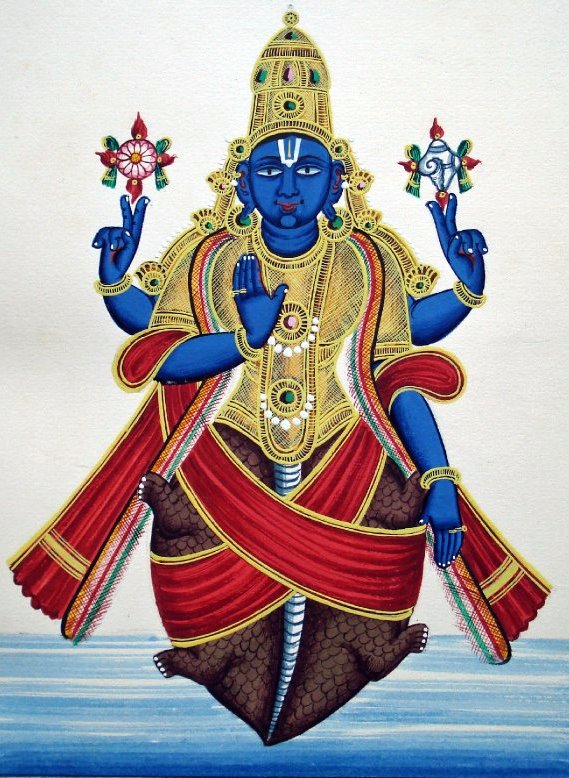So they all trooped up to Vishnu for help and he agreed to step in. But first he said, stop fighting the asuras. Befriend them. To defeat the demons, the devas need amrita, the immortality potion. And that lay deep within the ocean (the kshirsagara) and had to be churned out of its depths. The devas would not be able to do that alone.
They agree and the gods extend an olive branch to the asuras (there is a detailed story of the amrita manthan here that we will leave for another day). And Vishnu takes the form of a tortoise and becomes the stable base for Mt Meru that the gods tie with the large and winding rope-like body of the serpent king. The gods take the tail and the asuras the hood and they churn the ocean till the amrita arises from its depths. There are many other gifts too that the sea throws up, including poison but to keep to the kurma avatara, his role ends when the amrita is released.
There is a similar story that predates the dashavatara that puts Brahma as the tortoise. Here he saves the world by hoisting the earth on his back.
There is a difference between the kurma as an avatara and adikurma (prehistoric tortoise), as a stable support for Prithvi, as a vahana for Yamuna and in some sculptures as the right foot of the varaha (the following avatara).
Just how important was the kurma—poems were written in its honour, kings compared with it. Raja Bhoj of Dhar has a sataka (a 100 line verse inscribed on stone)–the avani kurma sataka. The poem speaks of the universal aspect of the tortoise, the belief that it supports the Earth and is like Meru, the cosmic mountain in the centre of the universe. Amazingly, it does not refer to the Kurma incarnation of Visnu.
Story collected by: Arundhuti Dasgupta
Source: Hindu Mythology, Wilkins, W. J.
Image details: Wikipedia
